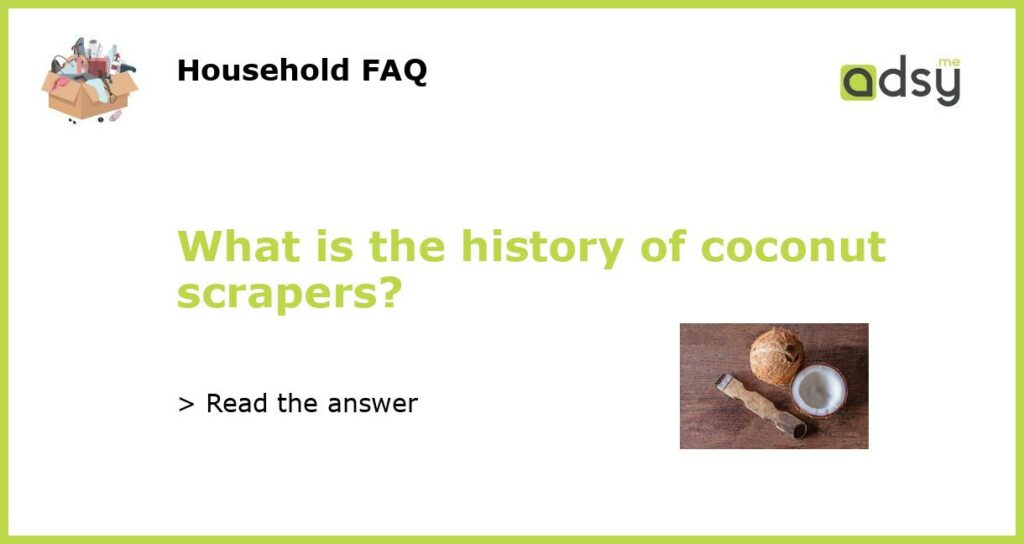The History of Coconut Scrapers: A Tool with a Rich Cultural and Culinary Background
Coconut scrapers, known as chunnikuru in Malayalam, are hand-held tools used primarily for extracting coconut meat from its shell. They are commonly found in the south of India, where coconuts are a staple food source and cultural symbol. The history of coconut scrapers is intertwined with the culinary practices and daily life of the people who use them.
The Beginnings of Coconut Scrapers
The exact origin of coconut scrapers is difficult to determine, but historians believe they have been used for thousands of years. The first coconut scrapers were likely made from simple materials such as wood or animal bones. Over time, these tools were refined and improved upon. Today, coconut scrapers are typically made from metal or plastic.
Coconut Scrapers in South Indian Culture
Coconut scrapers are an integral part of South Indian culture. They are used in many traditional dishes, such as coconut chutney and thengai paal (coconut milk). Rituals and religious ceremonies also often involve the use of coconuts, requiring scrapers to prepare them. In many households, coconut scrapers are passed down from generation to generation, becoming family heirlooms.
The Evolution of Coconut Scrapers
As technology and manufacturing processes developed, coconut scrapers evolved to become more efficient and user-friendly. In the 21st century, electric coconut scrapers were introduced, reducing the physical effort required to extract coconut meat. However, traditional hand-held coconut scrapers remain popular due to their cultural significance and connection to the past.
Coconut Scrapers in Modern Times
While coconut scrapers continue to be used in South Indian households, they have also gained popularity in other parts of the world. The rise of plant-based diets and an interest in traditional culinary practices have led to an increased demand for coconut scrapers. As a result, manufacturers have begun producing modern versions of the tool, appealing to the global market.






